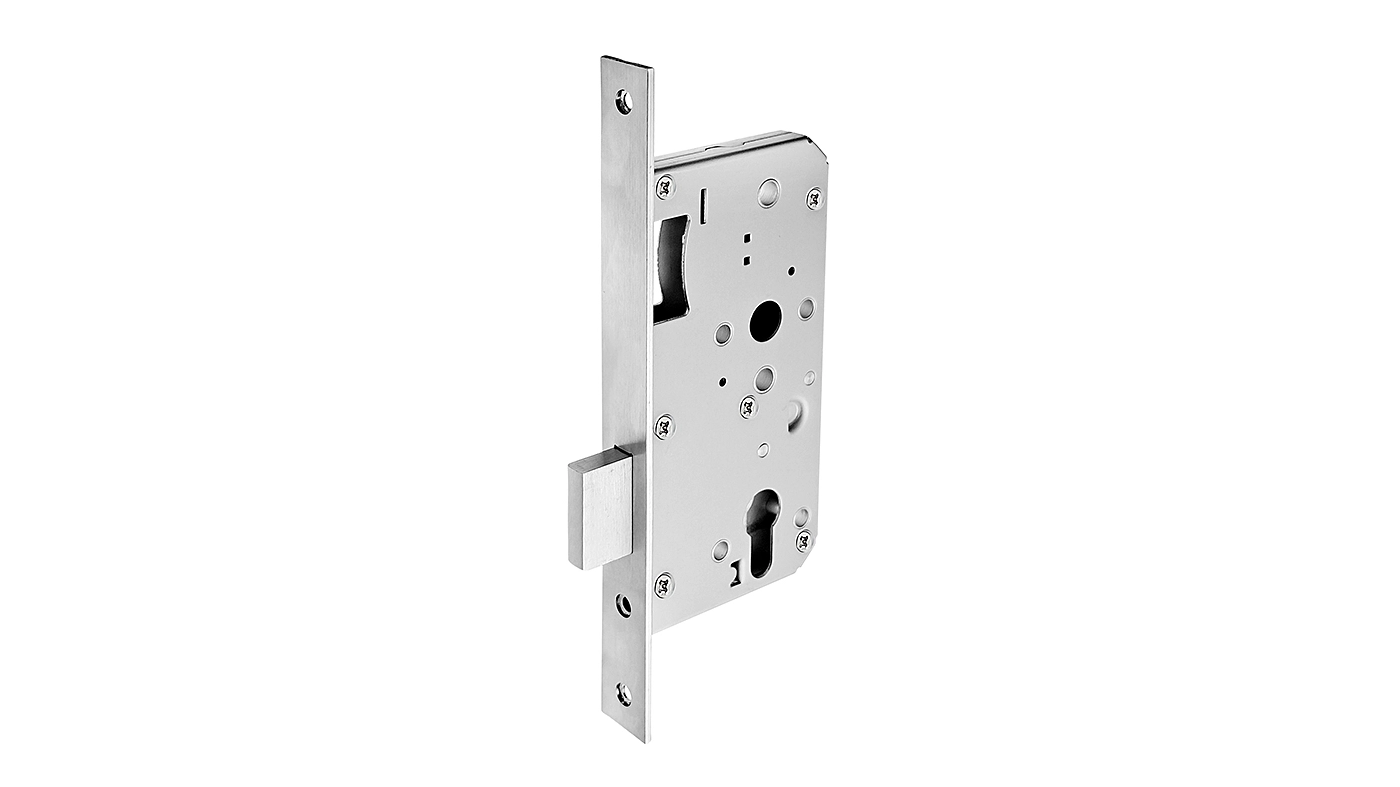When you walk into a modern office building, hotel, or retail space, the doors open smoothly, handles feel solid in your hand, and locks provide seamless security. This isn't by accident—it's the result of carefully selected commercial hardware designed to withstand heavy daily use while meeting strict European standards.
Commercial hardware encompasses all the mechanical components that make buildingsfunctional and secure. From door handles and locks to hinges and panic bars, these products must perform reliably under demanding conditions. Unlike residential hardware, commercial-grade products face regulatory requirements, durability tests, and performance standards that ensure they can handle thousands of daily operations.
Understanding commercial hardware becomes essential whether you're an architect specifying products for a new building, a facility manager maintaining existing infrastructure, or a contractor ensuring compliance with local regulations. This guide will walk you through everything you need to know about commercial hardware and the European standards that govern it.
Defining Commercial Hardware
Commercial hardware refers to heavy-duty door and window fittings designed for use in business, institutional, and public buildings. These products differ significantly from residential hardware in their construction, materials, and performance requirements.
The key characteristics of commercial hardware include:
Durability: Products must withstand frequent use, often handling hundreds or thousands of operations daily. Materials like stainless steel, solid brass, and reinforced aluminum ensure longevity.
Safety Compliance: Commercial spaces require hardware that meets fire safety codes, accessibility requirements, and emergency egress standards. This includes panic hardware, fire-rated locks, and ADA-compliant handles.
Security Features: Enhanced locking mechanisms, tamper-resistant designs, and integration with access control systems provide the security levels that commercial properties demand.
Standardized Performance: Unlike residential products that may vary widely in quality, commercial hardware must meet specific performance benchmarks for operation cycles, load capacity, and environmental resistance.

Types of Commercial Hardware
Commercial hardware spans several categories, each serving specific functions within building systems.
Door Hardware
Door hardware forms the largest category of commercial hardware products. This includes:
Locksets: Commercial-grade locks feature robust internal mechanisms, hardened steel components, and precise tolerances. They're designed for high-frequency use and often integrate with master key systems or electronic access control.
Handles and Levers: Commercial door handles must meet specific grip requirements and force specifications to ensure accessibility. Materials range from stainless steel to antimicrobial coatings for healthcare applications.
Hinges: Heavy-duty hinges support doors that may weigh significantly more than residential doors and experience constant use. Ball-bearing hinges reduce wear and ensure smooth operation over millions of cycles.
Exit Devices: Panic bars and exit devices provide emergency egress while maintaining security. These critical safety components must meet strict fire codes and accessibility standards.
Window Hardware
Commercial window hardware includes:
Window Operators: Casement and awning window operators must provide smooth operation while maintaining weather sealing under various environmental conditions.
Locking Systems: Multi-point locking systems secure large commercial windows against both intrusion and weather infiltration.
Hardware for Curtain Walls: Specialized hardware systems support and operate windows in modern glass curtain wall systems.
Access Control Hardware
Modern commercial buildings increasingly integrate traditional mechanical hardware with electronic systems:
Electronic Locksets: These combine mechanical locking with electronic access control, allowing keycard or smartphone entry while maintaining mechanical backup systems.
Magnetic Locks: Electromagnetic locking systems provide high security while allowing immediate release for emergency egress.
Integration Components: Brackets, power supplies, and control interfaces that connect mechanical hardware with building automation systems.
European Commercial Hardware Standards
European standards for commercial hardware provide a comprehensive framework ensuring product quality, safety, and performance across member countries. These standards, developed by CEN (European Committee for Standardization), create a unified approach to commercial hardware specification and testing.
EN 12209 Series Standards
The EN 12209 series covers door hardware performance requirements:
EN 12209: Specifies test methods for door hardware, including operation force requirements, durability testing, and environmental resistance parameters.
Performance Categories: Products receive classifications based on usage frequency (light, medium, heavy use) and environmental conditions (interior, exterior, corrosive environments).
Cycle Testing: Hardware components must demonstrate reliable operation through specified cycle counts—often 200,000 to 2,000,000 cycles depending on the application.
Fire Safety Standards
European fire safety standards directly impact commercial hardware selection:
EN 1634: Covers fire resistance testing for door and window hardware, ensuring that locking mechanisms don't compromise fire-rated assemblies.
EN 179 and EN 1125: Specify requirements for emergency exit hardware, including panic bars and emergency exit devices that must allow immediate egress without prior knowledge of operation.
Accessibility Standards
EN 301 549: Incorporates accessibility requirements for commercial hardware, specifying operation forces, grip requirements, and visual contrast standards that ensure usability for people with disabilities.
Security Standards
EN 12320: Provides security grading for commercial locks, with classifications ranging from basic security to high-security applications requiring specialized attack resistance.
EN 356: Covers security glazing requirements that impact window hardware selection, particularly for ground-floor and high-security applications.

Benefits of European Standard Commercial Hardware
Choosing commercial hardware that meets European standards offers several advantages:
Quality Assurance
European standards require rigorous testing and quality control processes. Products bearing CE marking demonstrate compliance with essential safety and performance requirements, providing confidence in long-term reliability.
Regulatory Compliance
Buildings using European standard commercial hardware can more easily demonstrate compliance with local building codes, fire safety regulations, and accessibility requirements across EU member states.
Interoperability
Standardized dimensions and performance characteristics ensure that European standard hardware components work together seamlessly, simplifying specification and reducing compatibility issues during installation or future maintenance.
Performance Predictability
Standardized testing methods mean that performance ratings provide reliable comparisons between products from different manufacturers. This enables more informed decision-making during the specification process.
Long-term Value
While European standard commercial hardware may carry higher initial costs, the enhanced durability, reduced maintenance requirements, and extended service life typically provide better total cost of ownership.
Choosing the Right Commercial Hardware
Selecting appropriate commercial hardware requires careful consideration of several factors:
Usage Requirements
Determine the expected frequency of use, user types, and operational environment. A corporate office entrance requires different hardware specifications than an emergency exit in a warehouse facility.
Environmental Conditions
Consider exposure to weather, temperature variations, humidity, and corrosive atmospheres. Coastal locations or industrial environments may require specialized corrosion-resistant materials and coatings.
Security Needs
Assess the required security level based on building contents, location, and risk factors. Financial institutions need different security hardware than general office buildings.
Integration Requirements
Modern buildings often require hardware that integrates with access control systems, building automation, or monitoring systems. Plan for both current needs and future expansion capabilities.
Maintenance Considerations
Factor in ongoing maintenance requirements, including lubrication schedules, adjustment procedures, and parts availability. Some hardware designs require less maintenance while providing longer service life.
Making Your Hardware Investment Count
Commercial hardware represents a significant investment in building infrastructure that will serve for decades. Understanding European commercial hardware standards ensures that your selection provides reliable performance, regulatory compliance, and optimal value.
European standard commercial hardware offers proven quality backed by comprehensive testing and performance verification. Whether you're planning new construction or upgrading existing facilities, choosing hardware that meets these established standards provides confidence in both immediate functionality and long-term reliability.
For buildings requiring the highest levels of performance and compliance, European standard commercial hardware provides the foundation for secure, accessible, and durable building operations that will serve occupants reliably for years to come.
European architectural hardware standards
European commercial hardware
commercial hardware
English
العربية
Français
Русский
Español
Português
Deutsch
italiano
日本語
한국어
Nederlands
Tiếng Việt
ไทย
Polski
Türkçe
አማርኛ
ພາສາລາວ
ភាសាខ្មែរ
Bahasa Melayu
ဗမာစာ
தமிழ்
Filipino
Bahasa Indonesia
magyar
Română
Čeština
Монгол
қазақ
Српски
हिन्दी
فارسی
Kiswahili
Slovenčina
Slovenščina
Norsk
Svenska
українська
Ελληνικά
Suomi
Հայերեն
עברית
Latine
Dansk
اردو
Shqip
বাংলা
Hrvatski
Afrikaans
Gaeilge
Eesti keel
Māori
සිංහල
नेपाली
Oʻzbekcha
latviešu
অসমীয়া
Aymara
Azərbaycan dili
Bamanankan
Euskara
Беларуская мова
भोजपुरी
Bosanski
Български
Català
Cebuano
Corsu
ދިވެހި
डोग्रिड ने दी
Esperanto
Eʋegbe
Frysk
Galego
ქართული
guarani
ગુજરાતી
Kreyòl ayisyen
Hausa
ʻŌlelo Hawaiʻi
Hmoob
íslenska
Igbo
Ilocano
Basa Jawa
ಕನ್ನಡ
Kinyarwanda
गोंगेन हें नांव
Krio we dɛn kɔl Krio
Kurdî
Kurdî
Кыргызча
Lingala
Lietuvių
Oluganda
Lëtzebuergesch
Македонски
मैथिली
Malagasy
മലയാളം
Malti
मराठी
ꯃꯦꯇꯥꯏ (ꯃꯅꯤꯄꯨꯔꯤ) ꯴.
Mizo tawng
Chichewa
ଓଡ଼ିଆ
Afaan Oromoo
پښتو
ਪੰਜਾਬੀ
Runasimi
Gagana Samoa
संस्कृत
Gaelo Albannach
Sepeti
Sesotho
chiShona
سنڌي
Soomaali
Basa Sunda
Wikang Tagalog
Тоҷикӣ
Татарча
తెలుగు
ትግንያውያን
Xitsonga
Türkmençe
संस्कृत
ئۇيغۇرچە
Cymraeg
isiXhosa
ייִדיש
Yorùbá
isiZulu






































